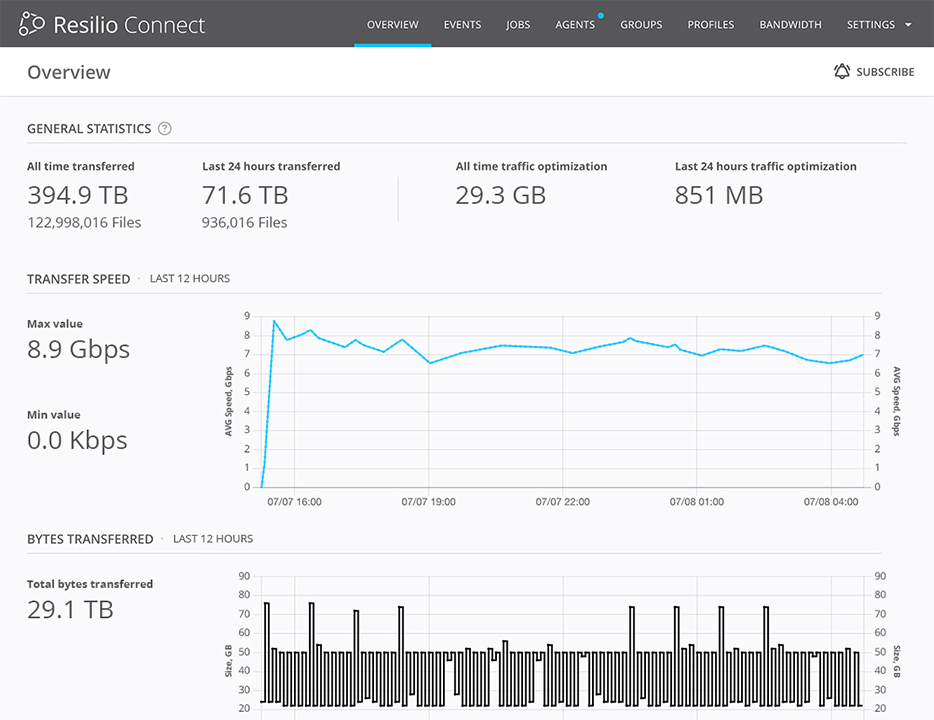We built Sync to help people move files of any size with the speed and security that can only be delivered with a cloud-free product. We ran a test to see just how fast Sync runs compared to cloud-based services in the market. Now we’re unveiling the results.
Week after week we’ve heard our users talk about speed; whether it’s an event planning company sending large audio/video files to clients, a graphic design agency in Europe sharing big Photoshop files between remote offices, or an IT team at a company like Angie’s List that reduced their Web deployment time from hours to seconds, they’ve shown us that Sync has been working as intended.
Sync is fast and it gets its speed from the BitTorrent protocol on which it is built, taking the shortest and fastest path when getting file pieces from one device to another. It leverages the full performance of a local network and goes directly between peers when crossing networks, without having to route everything through the cloud (and eliminates the need for central servers).
We knew we were fast, but we thought it would be interesting to see just how fast Sync is in head-to-head competition. So we ran a test comparing Sync against cloud-based services in the market. The results are below, as well as a detailed view of the methodology behind the test.
The Sync Speed Test
For this test, the file we used was a 1.36GB MP4 video clip from a Canon 5D Mark III camera. We measured total time to send and receive the file using Resilio Sync (BitTorrent Sync), Dropbox, One Drive, and Google Drive.
The test environment consisted of:
- 2 Apple MacBook Pros
- 2 Apple Thunderbolt to Gigabit Ethernet Adapters
- WiFi turned OFF
- Time.gov for a real-time clock
- Our Headquarters Internet Connection – 1 Gbps up/down
Our tests were conducted over local LAN – on the same switch – in order to rule out available bandwidth as a limiting factor. It’s important here to note that Dropbox, Google Drive and Microsoft OneDrive all rate-limit uploads and do not fully utilize the 1 Gbps bandwidth available (in regards to the office Internet connection, not the LAN switched). We’re confident that a slower Internet connection would yield similar results.
The test timer started when the MP4 file transfer was initiated and then stopped once the file was fully synced and downloaded onto the receiving machine.
For all services we tested, we ran three tests at various times during the day here in San Francisco. We wanted to maintain fairness and to account for internet congestion so our tests were run in the AM at the start of the workday, in the afternoon, and once again late in the evening when the office was mostly empty and internet use was at a minimum. We then took the average of the three times.
The results impressed even us: the 1.36GB video file took Resilio Sync 41 seconds to transfer between two laptops.
Sync performed 8x faster than Google Drive, 11x faster than OneDrive and 16x faster than Dropbox.
In The Interest of Full Disclosure: On the speed test, we encountered a few irregularities during testing that should be mentioned. Dropbox has a deduplication scheme in place – what this meant for our tests is that even though we deleted the video file from our Dropbox folder, traces of it still remained and Dropbox got ~50% faster at transferring the same video file each subsequent time we uploaded it. To correct for this, we needed a new file that wasn’t bit-for-bit identical to the video file we previously transferred. This was accomplished by firing up the terminal and running:
~$ dd bs=1024 count=1360000000 </dev/urandom >SpeedTestFile1
Once we re-tested Dropbox with new random files of the same size, consistent results were achieved. We tested Sync using these same randomly-generated files to ensure the controls for the testing were consistent and fair.
For Microsoft’s OneDrive, we were unable to “sync” files and therefore in order to measure total time for upload/download, we would measure the time to upload the file, pause the stopwatch, then measure the time to download the file.
Image: Flickr/Charles Barilleaux






